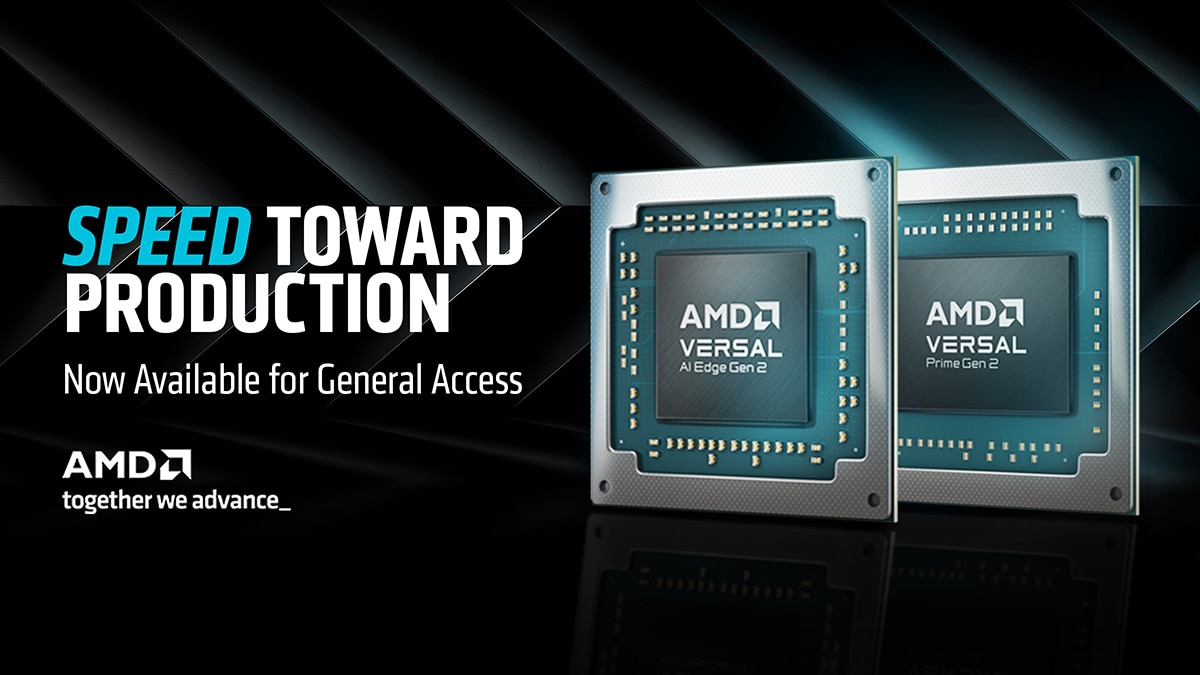Advancing AV-over-IP with IPMX: A Collaboration Between AMD and Matrox Video
Jun 06, 2025

Authors: Rob Green, AMD and Emily Engott, Matrox
In an increasingly connected AV landscape, multi-vendor interoperability, seamless communication across product classes, and future-ready scalability aren’t just “nice-to-have.” They’re essential.
AV-over-IP technologies are replacing traditional baseband systems at a rapid pace. In the move from baseband to AV over IP, open standards provide a sustainable, flexible, and collaborative foundation that proprietary technologies simply cannot match. They help integrators and end users avoid vendor lock-in, innovate faster, and build more resilient systems. But as many in the industry begin to shift away from proprietary technologies, the question becomes: how do we ensure all devices, regardless of manufacturer, can work together reliably and efficiently?
That’s where IPMX (Internet Protocol Media Experience) comes in. Developed by the Alliance for IP Media Solutions (AIMS) and the Video Services Forum (VSF), IPMX is a suite of open standards and specifications tailored to the needs of the Pro AV market. While it draws its foundation from established broadcast standards like SMPTE ST 2110, IPMX extends those principles to address the specific requirements of AV environments—where ease of use, plug-and-play functionality, and compatibility with HDMI are often just as critical as performance.
Built on Proven Technology
At its core, IPMX is based on ST 2110, which separates video, audio, and ancillary data into individual IP streams for maximum flexibility. This structure allows for more dynamic and scalable routing and signal management, particularly useful in AV systems where signal formats and resolutions may vary from room to room—or even device to device.
In addition to ST 2110, IPMX incorporates:
- AES67 for high-quality, synchronized audio over IP.
- AMWA NMOS for device discovery, registration, connection management, and control.
- Support for HDCP (High-bandwidth Digital Content Protection) to support digital rights management (DRM).
- Media options including uncompressed audio and video, and several codec options including JPEG-XS, HEVC, and H.264.
Together, these technologies create a unified framework that allows manufacturers to build interoperable products without reinventing the wheel—enabling seamless communication between displays, encoders, decoders, switches, and control systems across an IP network.
Interoperability, Flexibility, and Control
One of IPMX’s most transformative benefits is its emphasis on interoperability. In traditional AV deployments, systems are often locked into specific vendors, leading to integration challenges, costly workarounds, and limited system longevity. IPMX breaks that cycle. Because it is an open standard, manufacturers can independently develop compliant devices that are guaranteed to work together, opening the door to hybrid installations with best-of-breed components from multiple brands.
That interoperability goes hand in hand with flexibility. With IPMX, integrators can more easily build scalable systems that evolve over time. Whether supporting 1080p video in a small venue or scaling to uncompressed 4Kp60 in a high-performance environment, IPMX provides a framework that supports both compressed and uncompressed workflows over existing network infrastructure.
In addition, IPMX’s use of open specifications like NMOS makes it easier to manage and configure devices across the network. This allows integrators to deploy centralized or remote management platforms without relying on proprietary APIs or manufacturer-specific protocols.
Designed for the Real World
IPMX addresses the nuances of real-world AV workflows such as support for asynchronous HDMI sources, EDID handling, and HDCP encryption—all essential capabilities for Pro AV installations.
Equally important is the standard’s support for both visually lossless compression and fully uncompressed transport, giving system integrators the ability to choose the right balance of quality, latency, and bandwidth for their specific use case. This makes IPMX a truly adaptable solution that can serve a wide range of applications without requiring dedicated AV hardware or specialized cabling.
A Strategic Shift for the AV Industry
IPMX is more than a collection of protocols. It represents a shift toward open, standards-based AV design. It empowers integrators and end users to make purchasing and architectural decisions based on performance and value, rather than vendor constraints. It also simplifies training, support, and long-term maintenance, thanks to its consistent, standardized operation.
With increasing support from manufacturers, standards bodies, and industry alliances, IPMX is poised to become a cornerstone of the next generation of interoperable systems. This growing momentum signals a shift in thinking; a shift that recognizes open standards as not only a technical solution, but a strategic advantage. In short, open standards aren’t just good for technology. They’re also good for business.
Matrox Video's IPMX-Enabled Solutions
Matrox Video sees IPMX as a foundational building block for the next generation of AV-over-IP systems, delivering true interoperability, scalability, and long-term flexibility. By integrating IPMX into key products, Matrox Video empowers integrators and end users to design open, future-ready infrastructures free from proprietary constraints.

Matrox Video has integrated IPMX support into several of its products, including:
- Avio 2 IP KVM Extenders: Provide high-performance KVM extension over IP networks with ultra-low latency.
- ConvertIP Series: Offer baseband-to-IP and IP-to-baseband conversion, facilitating seamless integration into IPMX workflows.
- Vion IP Gateway: Acts as a versatile platform for aggregating and routing media signals across IP networks.
These products all feature fanless designs, making them suitable for noise-sensitive environments and ensuring long-term reliability. Attendees of InfoComm 2025 will have the opportunity to see these solutions in action.
AMD FPGAs and SoCs: Powering IPMX Performance
At the core of Matrox Video's IPMX-enabled products are AMD adaptive SoCs and FPGAs. These components offer the low-latency, deterministic performance required for high-bandwidth media transport over IP. Their flexibility allows for the implementation of complex protocols directly in hardware, ensuring compliance with IPMX specifications, and delivering robust, scalable solutions.

With a combination of high-speed transceivers supporting HDMI™, SDI and DisplayPort™ and trusted Ethernet MAC solutions from 10Mbps to 400Gbps, AMD FPGAs and SoCs not only provide the ideal bridge between existing baseband AV connectivity and IPMX networks, but also a reprogrammable and scalable platform that can adapt to changing needs and implement a variety of AV processing workloads alongside network streaming.
By leveraging AMD technology, Matrox Video can provide AV professionals with the tools needed to deploy reliable and efficient IPMX systems.
A Partnership Built on Innovation
The collaboration between AMD and Matrox Video spans over two decades, characterized by a shared commitment to innovation and excellence in AV technology. This enduring partnership has been instrumental in developing solutions that meet the evolving needs of the industry, particularly as it embraces IP-based infrastructures.
Looking Ahead
As the AV industry continues to evolve, the adoption of open standards like IPMX will be crucial in building interoperable and future-ready systems. AMD and Matrox Video remain dedicated to supporting this transition, combining their expertise to deliver solutions that empower professionals to navigate the complexities of modern AV deployments.
For more information on AMD products and AV-over-IP offerings, visit amd.com/proav
For more information on Matrox Video's IPMX-enabled products and to experience them firsthand, visit their booth 2821 at InfoComm 2025.









